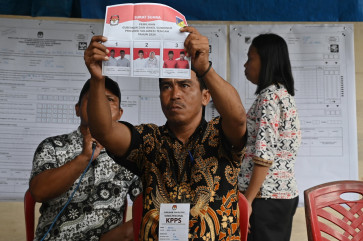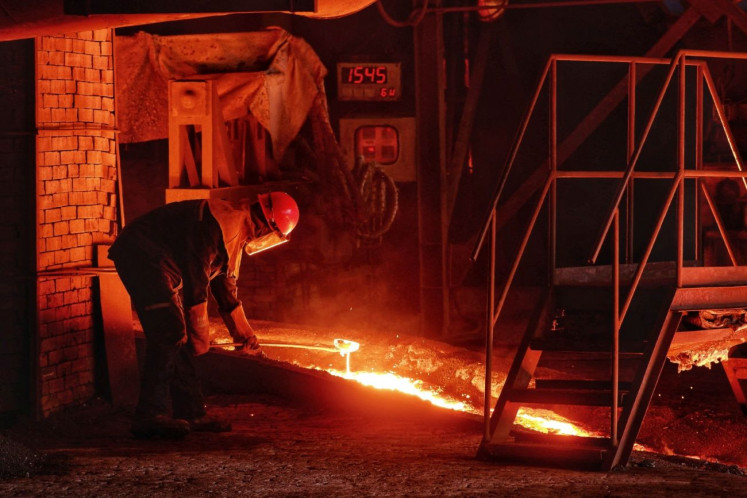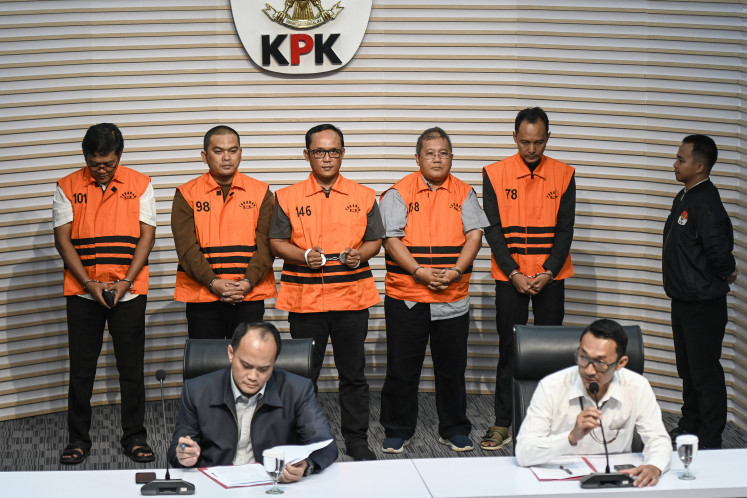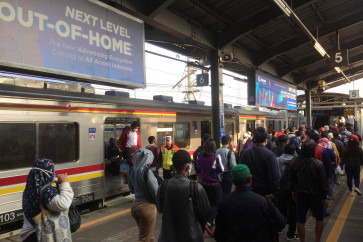Popular Reads
Top Results
Can't find what you're looking for?
View all search resultsPopular Reads
Top Results
Can't find what you're looking for?
View all search resultsAnalysis: BPKP audit forces retrofitting of KCI’s retired train cars despite obstacles
Change text size
Gift Premium Articles
to Anyone
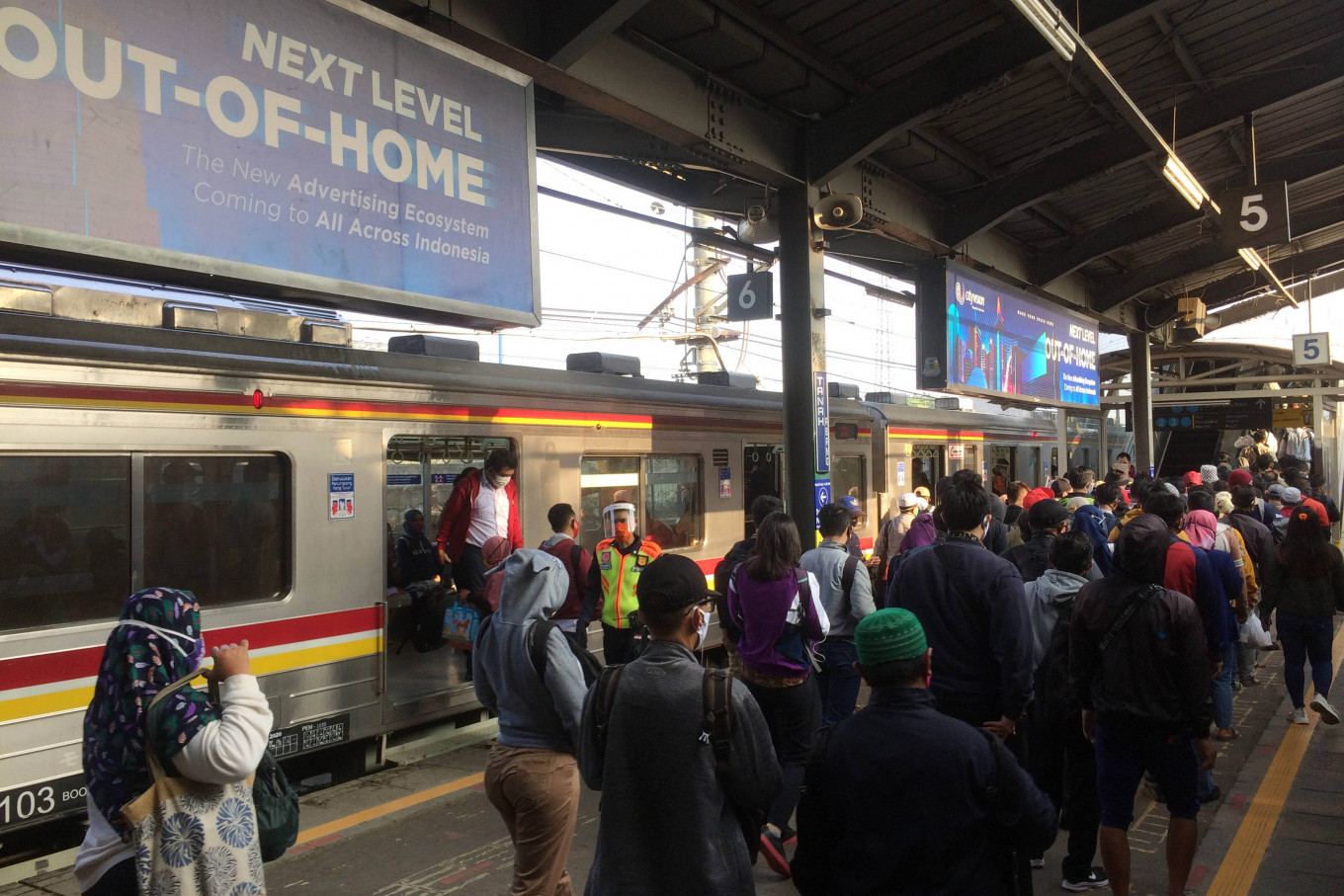 A number of passengers get off from a Commuter Line train at Tanah Abang Station, Central Jakarta, on Wednesday, September 16, 2020. PT Kereta Commuter Indonesia (KCI) bans their passengers to wear scuba masks or buff masks to prevent the coronavirus (COVID-19) transmission on the Commuter Line train. (JP/Dhoni Setiawan)
A number of passengers get off from a Commuter Line train at Tanah Abang Station, Central Jakarta, on Wednesday, September 16, 2020. PT Kereta Commuter Indonesia (KCI) bans their passengers to wear scuba masks or buff masks to prevent the coronavirus (COVID-19) transmission on the Commuter Line train. (JP/Dhoni Setiawan)
T
he Development Finance Comptroller’s (BPKP) recent audit over PT Kereta Commuter Indonesia’s (KCI) capacity shows that the KCI is surprisingly not overcapacity – starkly different with the public perception and the KCI’s own audit. The BPKP audit result solved the recent disagreement over the KCI’s plan to imported used trains from Japan and prompted the government to tell the KCI to send its retired train cars to INKA for retrofitting, despite the latter’s unfamiliarity with Japanese-made cars.
According to the BPKP audit, the KCI’s train occupancy still hovers at around 62.75 percent, projected to rise to 79 percent and then 83 percent in the coming two years. These results would imply that even if KCI retired a third of their fleet, they would still have the capacity to service commuters for the rest of 2023. However, the BPKP came to its conclusion for the 62.75 percent occupancy ratio based on the total number of occupants within the period of its test.
In contrast to BPKP’s review, the KCI did its own review based on peak hours, which found that its occupancy ratio could potentially spike up to 126 percent in 2023. This projection is based on the scenario where it retires some cars and reduces the KCI fleet down to 86 train cars. Should its fleet drop to 69 cars in 2024, the occupancy ratio could reach as high as 195 percent. Aggravating the issue further is the length of time of the retrofitting process, which is projected to take between 14 and 17 months, meaning that the KCI’s lowered capacity issue would be unavoidable for the rest of 2023.
Following the BPKP audit, the retrofitting scheme with PT Industri Kereta Api (INKA) is looking to be the only option for the KCI. However, INKA and its joint venture partner, Stadler Rail AG, do not specialize in the kind of trains the KCI train network uses.
The Greater Jakarta train network has historically used Japanese train cars, which use stainless steel and are well suited for tracks that run low to the ground and pass through roads. Meanwhile, INKA, since 2020 when it entered a joint venture with Stadler to make PT Stadler Inka Indonesia, has been specializing in aluminum train cars. Aluminum train cars are used for the LRT project and are a popular export commodity because of their lower carbon footprint compared with stainless steel cars, however they are ill suited for the KCI’s railways.
The primary proponent for retrofitting at the start was Industry Minister Agus Gumiwang Kartasasmita, citing that KAI should focus on promoting local manufacturers such as INKA. Even after the State-Owned Enterprises (SOE) Ministry voiced its approval of the KCI’s import plan, the Industry Ministry continued to oppose the import option so vehemently that Coordinating Maritime Affairs and Investment Minister Luhut Pandjaitan had to intervene.
On the other hand, the Transportation Ministry argues that KCI’s fleet can still be optimized to somewhat mitigate the overcapacity issue. One example of this would be to shorten the intervals between trains. Another example given by the Institute for Transportation studies is to move cars from less active routes to the more congested routes.



